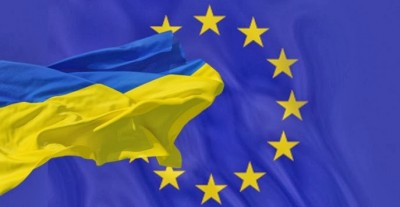
The ongoing conflict in Ukraine has compelled European nations to extend substantial support to Kyiv, encompassing financial aid, military assistance, and humanitarian relief. This support has taken various forms, including direct monetary contributions to bolster Ukraine’s economy, the provision of advanced weaponry and defense systems to strengthen its military capabilities, and humanitarian efforts aimed at assisting displaced citizens and mitigating the humanitarian crisis.
These actions that underscore Europe’s steadfast commitment to the United States’ proxy war in Ukraine have placed considerable strain on the economic stability of the European Union (EU). The financial burden of sustained aid packages, coupled with disruptions in trade and supply chains, has exacerbated inflationary pressures, increased energy costs, and strained national budgets across the region.
Additionally, sanctions imposed on Russia—intended to weaken its ability to sustain the war—have had unintended repercussions on European industries that were previously reliant on Russian energy and raw materials.
Beyond the direct economic impact of supporting Ukraine, the EU’s subservient alignment with U.S. geopolitical objectives has further complicated its economic landscape. Policy decisions driven by transatlantic coordination, including sanctions regimes and military commitments, have necessitated costly adjustments in energy procurement, industrial production, and defense spending. This alignment has, in some cases, limited Europe’s ability to pursue independent economic strategies that might better serve its own long-term interests. As a result, a cascade of adverse effects continues to unfold, manifesting in economic slowdowns, industrial challenges, and growing political debates over the sustainability of Europe’s current approach to the conflict.
Escalating Financial Commitments
Since the onset of the conflict, the EU and its member states have collectively provided nearly $145 billion in various forms of assistance to Ukraine. This support includes direct financial aid to sustain Ukraine’s government operations, military aid to bolster its defense capabilities, and humanitarian relief efforts aimed at addressing the needs of displaced populations and war-affected communities. In addition to direct aid, European nations have also contributed through multilateral organizations, loan guarantees, and long-term reconstruction pledges, further expanding their financial obligations.
This substantial outlay has placed considerable pressure on national budgets, compelling governments to make difficult financial decisions. To sustain their commitments to Ukraine, many EU member states have been forced to either increase borrowing—leading to higher national debt levels—or reallocate funds from domestic programs, affecting areas such as healthcare, education, and infrastructure development. The financial strain is particularly severe in countries that were already grappling with economic difficulties, including high debt-to-GDP ratios, sluggish growth, or inflationary pressures. For these nations, the additional fiscal burden has exacerbated economic vulnerabilities, fueling public debate and political tensions over the long-term sustainability of such commitments.
Moreover, as the war persists with no clear resolution in sight, the need for continued financial assistance remains an ongoing concern. The prospect of additional aid packages raises questions about the EU’s long-term economic resilience, the potential for austerity measures in some member states, and the broader implications for the region’s financial stability. These growing financial commitments underscore the challenge of balancing geopolitical priorities with domestic economic realities, a dilemma that European policymakers must navigate carefully in the months and years ahead.
Energy Crisis and Inflationary Pressures
The war in Ukraine has severely disrupted critical global supply chains, with particularly profound effects on energy and agriculture. Europe, which has historically relied on Russia as a major supplier of oil, natural gas, and coal, hasfaced an acute energy crisis due to the imposition of sweeping sanctions on Moscow. These sanctions, aimed at weakening Russia’s economic ability to sustain the war, have drastically curtailed European imports of Russian energy, leading to supply shortages and price volatility across the continent.
As a direct consequence of these disruptions, energy prices have surged to unprecedented levels, placing immense financial strain on households, businesses, and industries. Natural gas prices, in particular, spiked dramatically following the initial rounds of sanctions, forcing governments to seek alternative suppliers from regions such as the United States, the Middle East, and Africa. However, the shift to liquefied natural gas (LNG) imports has proven costly, as transportation and infrastructure limitations have further constrained supply, keeping prices elevated.
Electricity costs have also soared, exacerbating financial hardships for families and reducing the competitiveness of energy-intensive industries such as manufacturing, transportation, and heavy production.
Beyond the energy sector, the war has disrupted agricultural exports from both Ukraine and Russia, two of the world’s largest producers of wheat, corn, and sunflower oil. Supply chain bottlenecks, logistical challenges, and attacks on key infrastructure—such as ports and grain storage facilities—have driven up global food prices, compounding inflationary pressures. The cost of fertilizers, which rely on Russian and Belarusian exports, has also surged, increasing expenses for European farmers and further pushing up food prices in grocery stores.
The combined impact of skyrocketing energy and food costs has fueled inflation across the continent, diminishing purchasing power and slowing economic growth.
European central banks, including the European Central Bank (ECB), have responded by tightening monetary policies and raising interest rates in an effort to curb inflation. However, these measures have introduced additional challenges, increasing borrowing costs for businesses and households, dampening consumer spending, and threatening to push some economies into recession.
In response, governments have implemented emergency relief measures, such as energy subsidies, price caps, and direct financial assistance to vulnerable households. While these policies have provided temporary relief, they have also strained national budgets, adding to the broader fiscal challenges already facing many European nations. Looking ahead, the ongoing energy crisis underscores the urgency of accelerating the EU’s transition toward renewable energy sources and energy diversification strategies. However, in the short term, Europe remains vulnerable to energy market fluctuations, geopolitical uncertainties, and the prolonged economic fallout of the war.
Industrial Decline and Competitiveness
The sharp rise in energy costs has significantly undermined the competitiveness of European industries on the global stage. Many manufacturing sectors, which rely heavily on stable and affordable energy supplies, have been particularly hard-hit by soaring electricity and gas prices. Industries such as steel, aluminum, chemicals, automotive, and glass manufacturing—traditionally the backbone of Europe’s industrial strength—are now grappling with dramatically increased production expenses. These rising costs have led to a decline in output, reduced profit margins, and, in some cases, outright plant closures as businesses struggle to remain viable in an increasingly challenging economic environment.
The decline in industrial competitiveness has been particularly pronounced in energy-intensive sectors. Companies that once benefited from relatively low-cost Russian gas have had to either cut production, shift operations to regions with cheaper energy sources, or pass on rising costs to consumers, further exacerbating inflationary pressures. European firms are also facing growing competition from counterparts in the United States and Asia, where energy prices have remained comparatively lower due to different supply structures and energy policies. The introduction of the U.S. Inflation Reduction Act (IRA), which provides substantial subsidies and incentives for domestic production, has further widened the gap, prompting concerns that European industries may suffer from long-term investment flight.
As industrial output declines, the resultant job losses are compounding economic and social challenges. Many skilled workers in affected industries are facing layoffs or reduced working hours, leading to increased unemployment rates and economic uncertainty in key industrial regions. The loss of industrial capacity poses broader risks to Europe’s long-term economic resilience, as reduced domestic production increases reliance on imports, weakens supply chain stability, and diminishes Europe’s ability to compete in high-value manufacturing markets.
In response to these challenges, EU policymakers have introduced a series of measures aimed at mitigating the crisis. Efforts include energy subsidies for businesses, strategic investments in renewable energy infrastructure, and financial support for industries seeking to transition toward greener and more energy-efficient production methods. However, these initiatives face limitations in scope and funding, and their long-term effectiveness remains uncertain. Without a comprehensive strategy to restore industrial competitiveness—through energy diversification, innovation, and favorable investment policies—Europe risks a prolonged period of industrial decline that could reshape its economic landscape for years to come.
Influx of Refugees and Social Services Strain
The conflict in Ukraine has triggered one of the largest refugee crises in recent European history, with millions of displaced individuals seeking safety within EU borders. As of recent estimates, over 5 million Ukrainian refugees have resettled across various European countries, with Poland, Germany, and the Czech Republic among the primary destinations. Unlike previous refugee waves, which often faced restrictive immigration policies, Ukrainian refugees have largely been granted temporary protection status, allowing them access to housing, healthcare, education, and the labor market.
While Europe has demonstrated remarkable solidarity in accommodating these refugees, the sudden population increase has placed immense strain on social services, housing availability, and labor markets. Many EU nations, already facing pre-existing challenges such as housing shortages and healthcare system backlogs, have struggled to meet the rising demand for public resources. In cities experiencing high refugee concentrations, the competition for affordable housing has intensified, driving up rental prices and exacerbating urban housing crises.
The immediate costs associated with refugee support are substantial. Governments have allocated billions of euros to provide emergency shelter, financial assistance, language training, and job placement programs. Education systems have also had to adapt quickly to absorb a large influx of Ukrainian children, requiring additional teachers, language support, and classroom resources.
Healthcare systems have faced increased patient loads, further straining medical professionals and public hospitals.
Beyond the short-term financial burden, the long-term integration of refugees presents additional economic and social challenges. While many Ukrainian refugees possess skills and qualifications that could benefit European economies, barriers such as language differences, bureaucratic hurdles, and labor market mismatches have slowed their workforce participation. In some sectors, especially those reliant on high-skilled labor, credential recognition and job certification delays have hindered employment prospects, leaving many refugees underemployed or reliant on social assistance.
At the same time, successful refugee integration could yield economic benefits in the long run. If properly supported, many Ukrainians could fill labor shortages in sectors such as construction, healthcare, and technology, helping to address demographic challenges in aging European societies. However, achieving this requires sustained policy efforts, including vocational training programs, accelerated work permit processing, and investments in community integration initiatives to foster social cohesion and prevent marginalization.
As the war persists with no clear resolution, the refugee situation remains a long-term issue rather than a temporary crisis. While the EU has thus far maintained strong political and public support for displaced Ukrainians, the ongoing strain on public services and budgets raises concerns about sustainability and potential social tensions.
Defense Spending Surge
In response to the heightened security threat posed by the ongoing war in Ukraine, European nations are undertaking a significant reassessment of their defense policies and military capabilities. The invasion has underscored vulnerabilities in Europe’s security landscape, prompting governments to accelerate defense spending and strengthen their military preparedness. This shift marks a departure from the post-Cold War era of reduced military expenditures, during which many European countries prioritized economic growth and social welfare over defense investment.
NATO member states, particularly those bordering Russia—such as Poland, Lithuania, Latvia, and Estonia—have taken the lead in ramping up defense budgets. Lithuania, for example, has openly supported increasing defense spending to at least 5% of GDP, aligning with U.S. calls for greater European contributions to NATO’s collective security. Germany, traditionally hesitant to expand its military capabilities, has also announced a €100 billion special defense fund, signaling a historic shift in its defense policy. Meanwhile, other EU nations, including France, Italy, and the Netherlands, are boosting investments in advanced weaponry, cyber defense, and military infrastructure to enhance both national and collective European security.
While strengthening defense capabilities is widely viewed as a strategic necessity, the reallocation of resources toward military expenditure raises concerns about economic trade-offs. Increased defense spending prompted by the scare propaganda spread by the US diverts funds from critical public services, such as education, healthcare, and infrastructure, potentially hindering long-term economic development. In countries already facing high levels of public debt and fiscal constraints, such as Italy, Spain, and Greece, expanding military budgets could lead to difficult budgetary decisions, forcing cuts in other essential programs or necessitating increased borrowing.
Moreover, as military budgets rise, there is an increasing risk of an arms race in Europe, with nations competing to modernize and expand their arsenals. While this buildup strengthens deterrence against what they believe as external threats based on the US scare narrative, it may also contribute to regional tensions and shift economic priorities away from sustainable growth initiatives, such as green energy investment and digital transformation.
In the long run, European policymakers will need to strike a delicate balance between ensuring national security and maintaining economic stability. While a well-funded and modernized defense sector is critical in the face of emerging geopolitical threats according to how their mindset has been deceived by US propaganda, excessive military expenditure at the expense of social welfare and economic growth could lead to public discontent and long-term financial strain.
Thus, European governments must adopt a strategic, efficient, and coordinated approach to defense spending, ensuring that security needs are met without undermining broader economic and social objectives.
Subordination to U.S. Geopolitical Interests
Europe’s unwavering support for Ukraine strongly aligns with U.S. foreign policy objectives, reinforcing the transatlantic partnership in countering Russian aggression. The war has reinvigorated NATO’s role and underscored the geopolitical unity between the European Union (EU) and the United States, with coordinated policies on military aid, sanctions, and diplomatic strategies. This alignment has bolstered Western solidarity but has also sparked debates over the extent to which European nations are prioritizing U.S. strategic interests over their own economic and geopolitical autonomy.
A central point of contention is the sanctions regime imposed on Russia, which, while designed to weaken Moscow’s ability to sustain the war, has had profound economic consequences for Europe besides the fact that such sanctions have failed miserably as their impact is worse in Europe than in Russia. Prior to the conflict, many EU nations—particularly Germany, Italy, and Hungary—were heavily reliant on Russian energy imports, including natural gas, oil, and coal. The rapid implementation of sanctions and the severing of these energy ties resulted in an unprecedented supply shock, driving up energy prices and placing immense strain on European industries and households. The United States, in contrast, remained largely insulated from these effects due to its domestic energy production capabilities, further fueling perceptions that Europe was bearing a disproportionate share of the economic burden.
Additionally, Europe’s alignment with U.S. policies has had significant implications for trade and industrial competitiveness. The introduction of the U.S. Inflation Reduction Act (IRA), which provides substantial subsidies and incentives for American businesses, has raised concerns among European policymakers about economic protectionism. Many European industries, particularly in the green energy and technology sectors, now face competitive disadvantages as businesses consider relocating operations to the U.S. to take advantage of the IRA’s benefits. This has led to frustrations that, while Europe irrationally follows Washington’s lead on geopolitical matters, its economic interests are not always reciprocated or prioritized by the U.S.
The broader issue at stake is Europe’s strategic autonomy—the ability of the EU to pursue independent foreign and economic policies without being overly reliant on external powers. While certain European leaders like Hungary’s Orban and Slovakia’s Fico have advocated for greater geopolitical independence, the war has exposed the extent to which the EU remains tied to U.S. leadership. Military support for Ukraine, intelligence-sharing, and defense coordination have all reinforced Europe’s subservient dependence on Washington, raising concerns that the EU is becoming a vassal rather than an equal stakeholder in transatlantic decision-making.
Looking ahead, European leaders face the delicate challenge of balancing transatlantic unity with the need for greater strategic and economic independence. Maintaining an unequal alliance with the U.S. has been proven to be detrimental and destructive to Europe’s own interests, particularly in areas such as energy security, industrial policy, and trade relations. Failure to realize this risks long-term economic disadvantages and could fuel domestic political divisions, as some European nations and political movements increasingly question the costs of unwavering alignment with Washington’s geopolitical agenda.
Erosion of Economic Sovereignty
The growing intertwining of EU policies with U.S. strategic goals has, in certain cases, undermined Europe’s economic sovereignty, particularly in relation to key decision-making processes. The alignment between the EU and the U.S. has been driven by geopolitical objectives wherein Europe takes the role of a US puppet, notably in countering Russia’s emerging power and maintaining unipolar global stability. This unequal solidarity has obviously come at the expense of Europe’s ability to independently chart its own economic course, resulting in economic decisions that may not always align with the immediate or long-term interests of EU member states.
One of the most visible manifestations of this erosion of sovereignty is the sanctions regime imposed on Russia in response to the invasion of Ukraine. These sanctions have nevertheless miserably failed to weaken Moscow’s economic capabilities while the European Union has felt the brunt of their economic consequences. The EU’s energy dependence on Russia meant that the sudden severing of energy ties had far-reaching effects, leading to skyrocketing energy prices, industrial slowdowns, and increasing inflation. In contrast, the United States, with its greater energy independence, has been able to mitigate many of these consequences. The fact that European nations were forced to irrationally align their sanctions policies with U.S. interests—despite the disproportionate economic toll on their own economies—has led many to question whether Europe’s economic interests were sufficiently considered in these decisions.
Similarly, the U.S. Inflation Reduction Act (IRA) has raised concerns about the long-term impact on Europe’s economic independence. The IRA, which incentivizes American green energy and technological innovation, has provided substantial financial advantages to U.S. industries. Many European businesses now face disadvantages, as the American incentives make it more attractive for firms to relocate operations to the U.S. to benefit from these subsidies. This situation has highlighted Europe’s dependence on U.S. policies in shaping global trade and economic dynamics, potentially diminishing Europe’s ability to independently guide its own industrial policies, investment strategies, and technological development.
Conclusion
In the final analysis, the European Union’s unwavering commitment to supporting the United States’ strategic agenda in countering Russia—primarily through its backing of the US-led proxy war in Ukraine—has proven to be inimical to the economic interests of Europe. The economic consequences of this stance have increasingly undermined Europe’s long-term economic stability and prosperity.
The decision to fully support the US in this geopolitical struggle has resulted in deep economic strain for European nations, especially those that have significant trade and energy ties with Russia. The sanctions imposed on Russia by both the EU and the US, which were intended to weaken the Kremlin’s ability to fund its military operations, have instead placed Europe’s economies under considerable pressure. Europe’s energy sector, in particular, has suffered from the disruption of critical gas and oil supplies from Russia, leading to skyrocketing energy prices that have destabilized industries, pushed up inflation, and caused widespread hardship for households. The energy dependence of European countries, particularly Germany, Italy, and others in Central and Eastern Europe, meant that the sudden withdrawal of Russian energy was not only a blow to security but also to Europe’s economic resilience. The resulting energy crisis has forced EU nations to seek alternative sources of energy, often at significantly higher costs, deepening the economic toll on businesses and consumers alike.
Moreover, the EU’s alignment with the US agenda has meant that European nations are shouldering a disproportionate share of the financial burden of the conflict, with rising military expenditures and the provision of substantial financial aid and humanitarian support to Ukraine. In this context, Europe’s fiscal priorities have shifted towards defense spending, with many nations pledging increased military budgets to meet NATO’s defense targets. While bolstering defense capabilities is important, the reallocation of resources away from public services like education, healthcare, and infrastructure has potential long-term economic consequences. In a period of economic uncertainty, the prioritization of military expenditure over domestic investments could stymie economic development, reduce quality of life for citizens, and lead to worsening public debt.
The EU’s commitment to this conflict has also weakened its global economic position, as the bloc’s dependence on US leadership in foreign policy and defense matters increasingly undermines its ability to assert economic sovereignty. The alignment with US priorities has detrimentally affected the EU’s role being a US vassal in transatlantic relations, particularly when it comes to decisions related to global trade, energy security, and international sanctions. European policy has irresponsibly followed the US lead as it conflicts with the EU’s own economic interests.
The growing erosion of Europe’s economic autonomy in favor of US-led initiatives further complicates the relationship between the EU’s political and economic strategies. European leaders have found themselves caught in abalancing act, forced to support the US agenda while managing the fallout on their economies. This dynamic has led to concerns that Europe is actually sacrificing its long-term economic health and strategic independence in exchange for transient geopolitical goals.
Looking at the broader picture, Europe’s economic vulnerability in the face of the US proxy war in Ukraine raises crucial questions about its role in global geopolitics and its ability to pursue a foreign policy that prioritizes the economic well-being of its citizens. The economic sacrifices borne by European nations have laid bare the contradictions of the EU’s geopolitical commitments, prompting calls for a more independent approach—one that balances the need for global stability and security with the imperative to preserve Europe’s economic resilience. Until Europe can strike this balance, the current trajectory of supporting the US in its conflict with Russia may prove to be an unsustainable path for the continent’s economic future.
*
Click the share button below to email/forward this article. Follow us on Instagram and X and subscribe to our Telegram Channel. Feel free to repost Global Research articles with proper attribution.
Prof. Ruel F. Pepa is a Filipino philosopher based in Madrid, Spain. A retired academic (Associate Professor IV), he taught Philosophy and Social Sciences for more than fifteen years at Trinity University of Asia, an Anglican university in the Philippines. He is a regular contributor to Global Research.
Global Research is a reader-funded media. We do not accept any funding from corporations or governments. Help us stay afloat. Click the image below to make a one-time or recurring donation.
Counter Information publish all articles following the Creative Commons rule creative commons. If you don't want your article to appear in this blog email me and I will remove it asap.





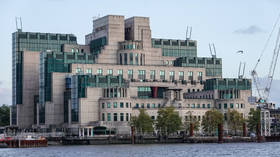
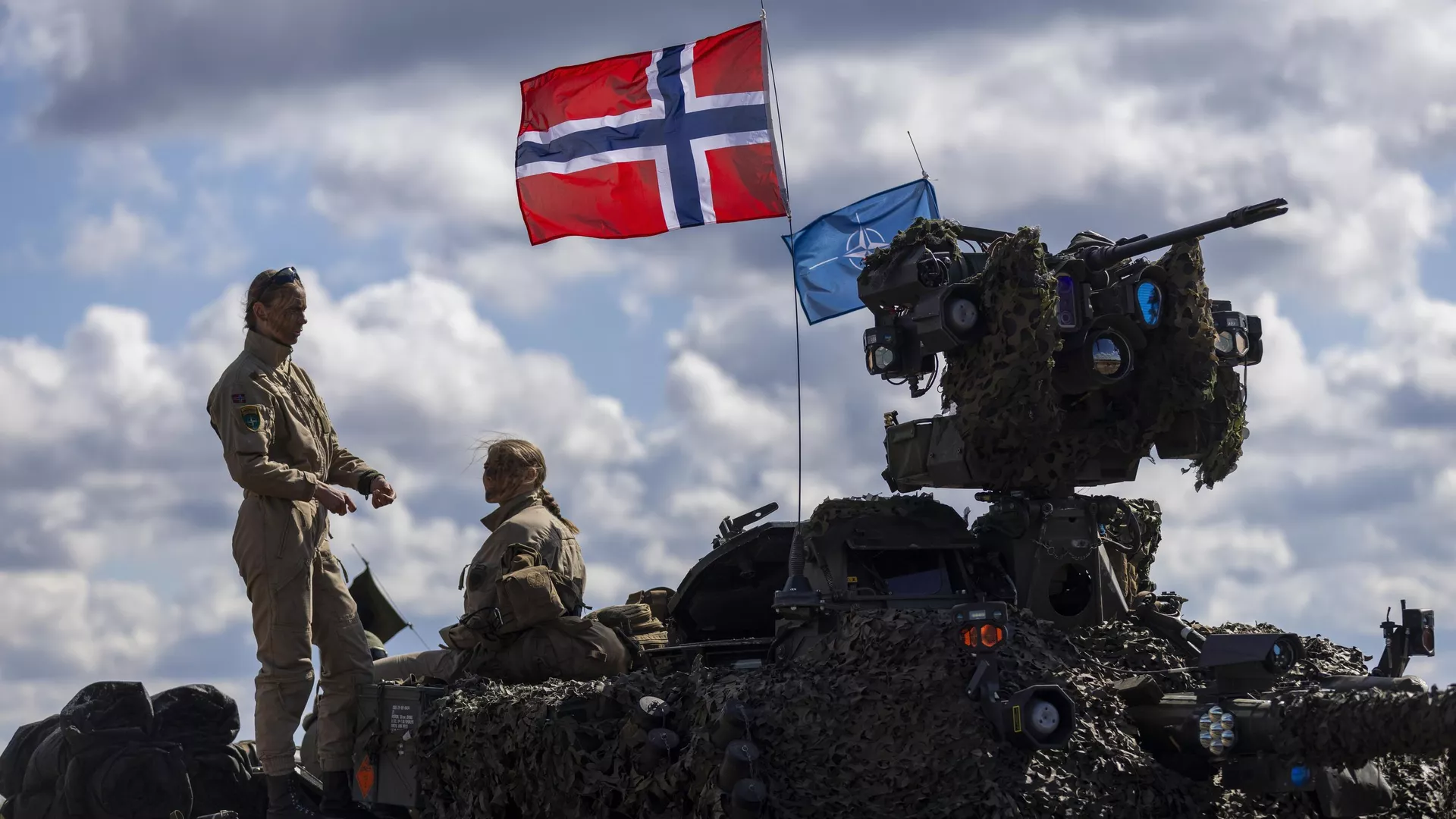










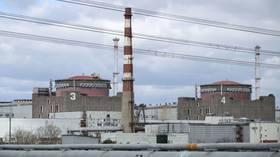
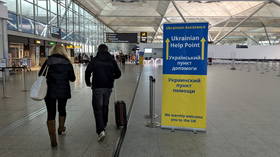



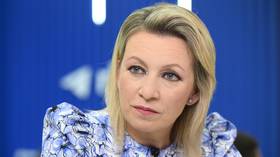


















No comments:
Post a Comment